Groups joined
Discussions started
Discussion Comments
Resources added
Netty Cheruto added a new Event - "Live Q&A session on AI models for Processing Camera Trap Imagery:A highlight of WildID." to AI for Conservation
Netty Cheruto added a new Discussion - "Live Q&A on AI models to process Camera Trap Imagery: All about WildID" to AI for Conservation
Netty Cheruto added a new Article - "The Women in Conservation Technology Programme: Reporting from our Opening Workshop" to East Africa Community
Netty Cheruto added a new Discussion - "Conservation Technology Gaps in East Africa" to East Africa Community
Netty Cheruto added a new Article - "Baotree;A Participatory Data Management Tool Piloted in Kenya." to Data management and processing tools
Netty Cheruto added a new Discussion - "Are you Using EarthRanger?" to East Africa Community
Netty Cheruto added a new Career Opportunity - "Conservation Science Data Specialist" to East Africa Community
Netty Cheruto added a new Discussion - "Welcome to WILDLABS East Africa Community!" to East Africa Community
Netty Cheruto added a new Event - "Women In Conservation Technology Programme, Kenya" to East Africa Community
Groups
Group
- Latest Discussion
- Free online tool to analyze wildlife images
- Latest Resource
- /
- AI for Conservation Office Hours: 2025 Review
Read about the advice provided by AI specialists in AI Conservation Office Hours 2025 earlier this year and reflect on how this helped projects so far.
Group
- Latest Discussion
- Free online tool to analyze wildlife images
- Latest Resource
- /
- AI for Conservation Office Hours: 2025 Review
Read about the advice provided by AI specialists in AI Conservation Office Hours 2025 earlier this year and reflect on how this helped projects so far.
Group
- Latest Discussion
- Graph of life platform
This is a chance to participate in a short survey about the preferences that conservation practitioners have for evidence. There's a chance to win one of three £20 Mastercard gift cards.
Group
- Latest Discussion
- New Group Proposal: Systems Builders & PACIM Designers
- Latest Resource
- /
- Population genetics with eDNA
Using SNP markers with an Amphibian species, we were able to identify a total of 17,617 nuclear single nuclear polymorphisms shared across individual, pond eDNA (4 populations) and tank eDNA samples (where tadpoles of the four ponds were housed), enabling us to detect genetic structuring across sampling locations (previously demenstrated with microsatellites and tissue samples), consistent with individual-based estimates. Collecting only the matrix (here water) allows describing the existing population structure...that could be a nice progress for conservation biology...
Group
- Latest Discussion
- Support the Cartographer Cause!
- Latest Resource
- /
- MyProgress: Advancing GIS and R programming skills.
A fascinating journey of unleashing my potentials in spatial analysis using ArcGIS Pro and R programming.
Group
- Latest Discussion
- How has the Funding & Finance group done?
- Latest Resource
- /
- AI for Conservation Office Hours: 2025 Review
Read about the advice provided by AI specialists in AI Conservation Office Hours 2025 earlier this year and reflect on how this helped projects so far.
Group
- Latest Discussion
- New Group Proposal: Systems Builders & PACIM Designers
- Latest Resource
- /
- Application of computer vision for off-highway vehicle route detection: A case study in Mojave desert tortoise habitat
Driving off-highway vehicles (OHVs), which contributes to habitat degradation and fragmentation, is a common recreational activity in the United States and other parts of the world, particularly in desert environments with fragile ecosystems. Although habitat degradation and mortality from the expansion of OHV networks are thought to have major impacts on desert species, comprehensive maps of OHV route networks and their changes are poorly understood. To better understand how OHV route networks have evolved in the Mojave Desert ecoregion, we developed a computer vision approach to estimate OHV route location and density across the range of the Mojave desert tortoise (Gopherus agassizii). We defined OHV routes as non-paved, linear features, including designated routes and washes in the presence of non-paved routes. Using contemporary (n = 1499) and historical (n = 1148) aerial images, we trained and validated three convolutional neural network (CNN) models. We cross-examined each model on sets of independently curated data and selected the highest performing model to generate predictions across the tortoise's range. When evaluated against a ‘hybrid’ test set (n = 1807 images), the final hybrid model achieved an accuracy of 77%. We then applied our model to remotely sensed imagery from across the tortoise's range and generated spatial layers of OHV route density for the 1970s, 1980s, 2010s, and 2020s. We examined OHV route density within tortoise conservation areas (TCA) and recovery units (RU) within the range of the species. Results showed an increase in the OHV route density in both TCAs (8.45%) and RUs (7.85%) from 1980 to 2020. Ordinal logistic regression indicated a strong correlation (OR = 1.01, P < 0.001) between model outputs and ground-truthed OHV maps from the study region. Our computer vision approach and mapped results can inform conservation strategies and management aimed at mitigating the adverse impacts of OHV activity on sensitive ecosystems.
Group
- Latest Discussion
- Women Conserving Southern Africa
- Latest Resource
- /
- Making Progress: Women in Conservation Technology Programme, Kenya
We invite you to join us in reflecting on the extraordinary progress each of our WiCT Kenyan cohort members has made since 2022 and follow along on their dynamic conservation tech career journeys. Featuring fifteen exciting blog posts made here on WILDLABS in each of their own words.
Bookmarks
Keep track of the resources that matter to you! Collections let you save, organise, and share content from all over the WILDLABS community. Create your first collection by clicking on the bookmark icon wherever you see it.
My Courses
These are your in-progress and completed courses. Explore more courses through our catalogue.
To find courses you have created, see your "My Draft Content" or "My Content" tabs.


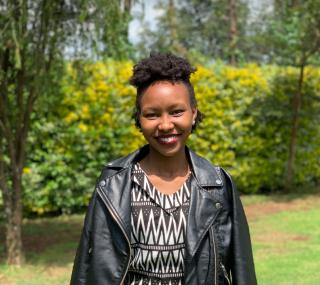


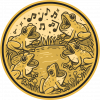




































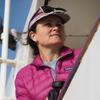
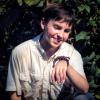











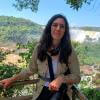
Netty Cheruto commented on "Using social media for Citizen Science projects - examples"